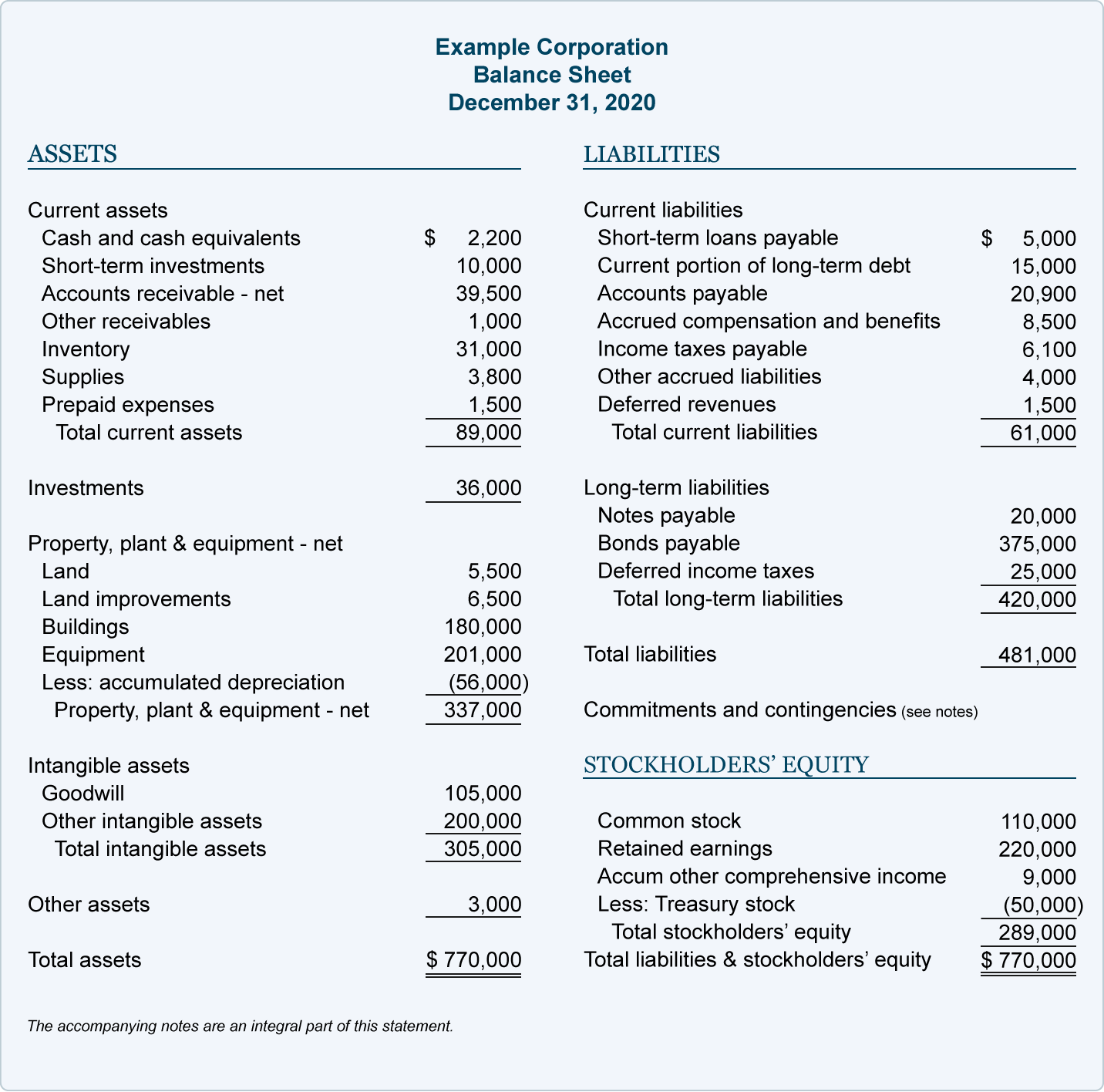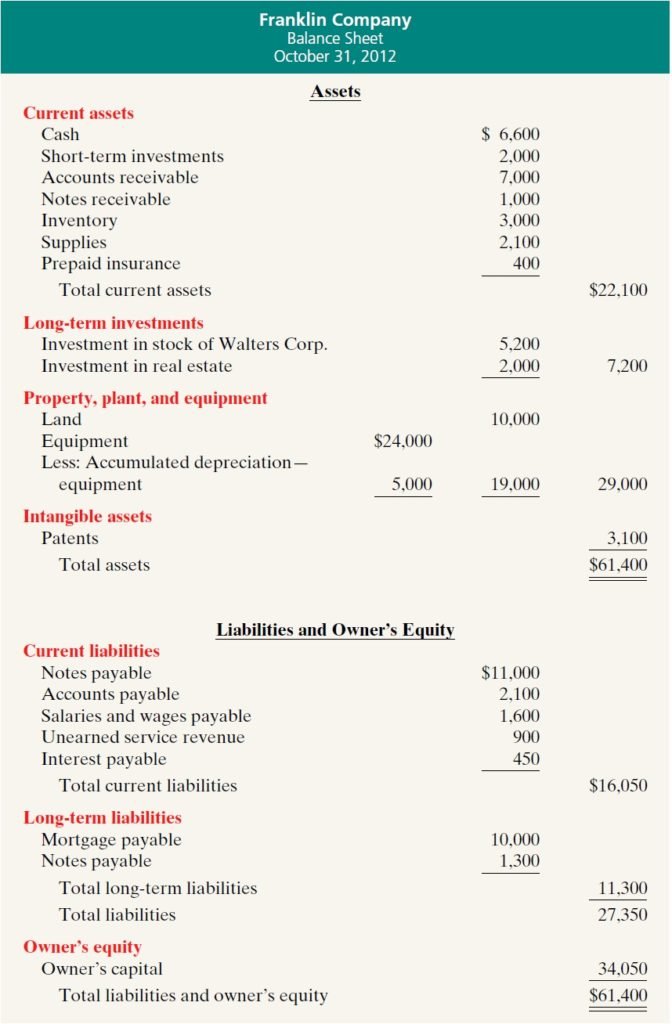What Is a Balance Sheet? Definition, Explanation and Format Examples

As you can see from the balance sheet above, Walmart had a large cash position of $14.8 billion in 2024, and inventories valued at over $54.9 billion. This reflects the fact that Walmart is a big-box retailer with its many stores and online fulfillment centers stocked with thousands of items ready for sale. This is matched on the liabilities side by $56.8 billion in accounts payable, likely money owed to the vendors and suppliers of many of those goods. As you can see, each of the main accounting equation accounts is split into more useful categories.
Current Ratio
Looking for an even simpler way to create balance sheets that support your business? FreshBooks’ free balance sheet template will help you keep track of all the information you need to manage your numbers with ease, helping you to check balances and keep your finances in order. If the fundamental accounting equation is not true in a financial model—i.e. The balance sheet does not “balance”—the financial model contains an error in all likelihood.
Balance Sheet Analysis
Keep in mind a portion of these long-term notes will be due in the next 12 months. Owners’ equity claims are made against the firm rather than the firm's assets. For example, if a large company maintains its own fire station on its grounds, the building and the equipment are considered assets by this definition.
Ask Any Financial Question
Like assets, you need to identify your liabilities which will include both current and long-term liabilities. However, it is common for a balance sheet to take a few days or weeks to prepare after the reporting period has ended. If the company takes $10,000 from its investors, its assets and stockholders’ equity will also increase by that amount.
Property, plant and equipment – net

The liabilities section is broken out similarly as the assets section, with current liabilities and non-current liabilities reporting balances by account. The total shareholder's equity section reports common stock value, retained earnings, and accumulated other comprehensive income. Apple's total liabilities increased, total equity decreased, and the combination of the two reconcile to the company's total assets. The key components of current assets are cash and cash equivalents, marketable securities, accounts receivable, inventory, prepaid expenses, and other liquid assets.
Report format:
- That is why there is no need to have their financial statements published to the public.
- The balance sheet provides an overview of the state of a company's finances at a moment in time.
- When a balance sheet is prepared, the current assets are listed first and non-current assets are listed later.
- The balance sheet (also known as the statement of financial position) is a financial statement that shows the assets, liabilities, and owner’s equity of a business at a particular date.
Non-Current Assets is an account where assets that cannot be quickly converted into cash—often selling for less than the purchase price—are entered. On the other hand, investors and analysts may also view companies with extremely high current ratios negatively because this could also mean their assets are not being used efficiently. For example, if Company B has $800,000 in quick assets and current liabilities of $600,000, its quick ratio would be 1.33. On the other hand, if the cash ratio is lower than 1, the company has insufficient cash to pay off its short-term debts. The line buildings and improvements reports the cost of the buildings and improvements but not the cost of the land on which they were constructed.
Thus, you will see that their inventory for resale on their balance sheet is simply called “Inventory.” This is the goods they have purchased for resale but have not yet sold. A manufacturer, like Apple, Inc. in the Link to Learning sections, will have a variety of inventory types including raw materials, work in progress, and finished goods inventory. These represent the various states of the inventory (ready to use, partially complete, and fully completed product). By comparing your income statement to your balance sheet, you can measure how efficiently your business uses its total assets. For example, you can get an idea of how well your company can use its assets to generate revenue. While current assets can be converted into cash within a year, liquidating non-current assets, such as fixed assets (PP&E), can be a time-consuming process.
A company's balance sheet, also known as a “statement of financial position,” reveals the firm's assets, liabilities, and owners’ equity (net worth) at a specific point in time. The balance sheet, together with the income statement and cash flow making sense of deferred tax assets and liabilities statement, make up the cornerstone of any company's financial statements. Important ratios that use information from a balance sheet can be categorized as liquidity ratios, solvency ratios, financial strength ratios, and activity ratios.
This section is important for investors because it shows the company's short-term liquidity. According to Apple's balance sheet for fiscal year 2023, it had $143 million in the Current Assets account it could convert to cash within one year. This short-term liquidity is vital—if Apple were to experience issues paying its short-term obligations, it could liquidate these assets to help cover these debts. Current assets indicate a company’s ability to pay its short-term obligations. They are an important factor in liquidity ratios, such as the quick ratio, cash ratio, and current ratio.

Komentariši